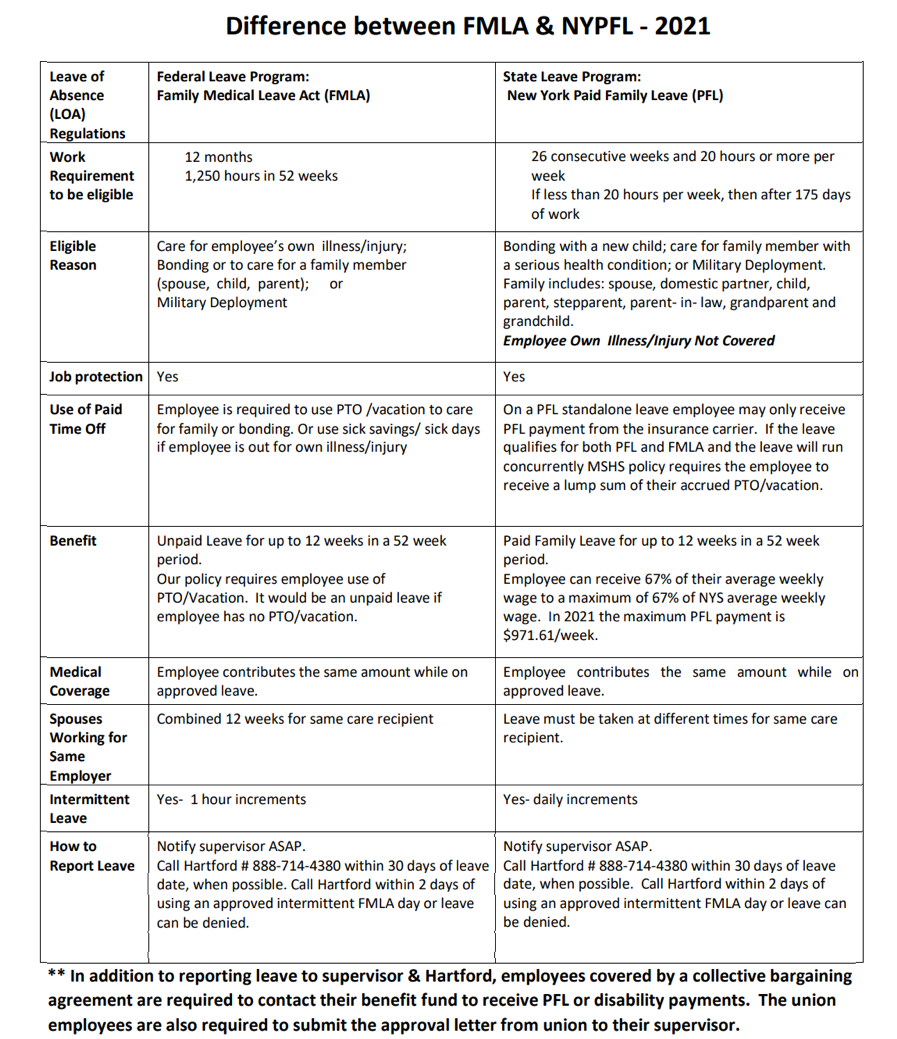Duty Hours Overview and Tips
Work/duty hour limits are defined by the ACGME and NY State 405 Laws. It is the program’s responsibility to ensure that each resident can comply with the duty hour limits. Residents must regularly enter all their duty hours through New Innovations. If duty hour violations are reported, it is the program’s obligation to identify the cause so that all residents are able to stay in compliance. The Program Director reviews the work hours report quarterly, and then submits a compliance summary to the Dean.
Key Duty Hours Limits:
Maximum of 80 hours per week averaged over 4 weeks, inclusive of all in-house clinical and educational activities, clinic assignments, clinical work done from home, and all moonlighting activities
8 hours off between shifts
24 hours off per week, not averaged (at-home call cannot be assigned on the 24 hours off)
Maximum of 24 hours a shift, plus 3 hours for sign-out/handoff ("transition time")
Note: Moonlighting shifts must fit within duty hour regulations.
Expectations:
Do not start a consult after 7PM unless it is a neurologic emergency. Any consult that comes in between 7-8PM will be signed out to the nightfloat resident unless it is a neurological emergency.
The short call resident should sign out to the nightfloat at 8PM. After signout, the short call Resident should finish their notes and leave.
Short call MUST end at 11 PM each night in order to ensure 8 hours off in between shifts.
Do not start a consult after 7AM unless it is a neurologic emergency. Any consult that comes in between 7-8AM will be signed out to the day team. The nightfloat resident should leave at 9AM after morning report.
If you know that you are going to violate hours, you should call your senior resident/chief resident immediately. Together you should devise a plan that will allow you to comply with duty hour regulations.
Additional ACGME Guidelines
Sick Policy
MSH Residents receive 12 days of paid sick leave per year, cumulative to a maximum of 60 days. Residents are encouraged to take a sick day if they are unwell and unable to work. Residents should notify the Chief Resident on call immediately when they realize that they will not be able to work. At that point, the Chief Resident will notify the Jeopardy Resident that they will be assigned to cover the open shift(s). It is expected that the resident taking sick leave will give their best estimate of how many days they will be out, and they will continue to update the Chief Resident regularly if that estimate changes.
The Chief Resident will notify the Residency Coordinator when a resident takes a sick day, and these days will be tracked per MSH guidelines. Additionally, days covered by the jeopardy resident will be tracked, and an attempt will be made whenever possible to divide jeopardy coverage evenly across the residency class.
Leave of Absence
The ABPN requires that all programs allow a minimum of four weeks of leave time (including vacation, sick time, maternity/paternity leave, etc.) during training per year. These four weeks should be averaged over the four-year training period. Leave or vacation time may NOT be used to reduce the total amount of required residency training or to make up deficiencies in training. Programs must allow a minimum of 6 weeks of time away from training for purposes of parental, caregiver, and medical leave at least once during training, without exhausting all other allowed time away from training and without extending training. Within ABPN and ACGME policy guidelines, it is up to the program director and the program clinical competency committee to determine whether a given resident has met training requirements or must extend their period of training.
If you need to take a leave of absence (LOA) for any reason, please reach out to the Program Director and the Residency Coordinator as soon as possible to let them know and for guidance through the necessary steps. A LOA is typically managed through the Family Medical Leave Act (FMLA) and the NYS Paid Family Leave (NYS PFL).
Family Medical Leave Act (FMLA) is a 12-week unpaid leave of absence that allows you to be away from work for self-illness, disability or to care for an immediate family member. FMLA allows you to maintain your medical benefits and provides job security. To qualify you must be employed for 12 months and to have worked 1,250 hours.
-
NYS Paid Family Leave (NYS PFL) is a 12-week (2021) paid leave of absence that allows you to bond with a new child, care for sick family member or assist a family member when they are deployed abroad on active duty. To qualify for PFL you need to have worked 26 consecutive weeks and 20 hours or more per week.
NYS PFL will run concurrent with FMLA
While on FMLA/PFL you will be paid your regular salary using your earned vacation days.
Once you have exhausted your earned vacation days, you will be eligible to receive weekly PFL payments from The Hartford in the amount of $971.61 which is the capped Average Weekly Wage in NYS for 2021.
You can opt to take the balance of NYS PFL at later date prior to the one-year date of the birth of the baby.
You can keep your health insurance while on leave of absence. When you are no longer receiving income from Mount Sinai, you will be billed for your missed deductions. When you return to work, your unpaid benefits deductions will be taken from your paycheck. The Benefits Department will notify you of the amount of deductions to be paid.
